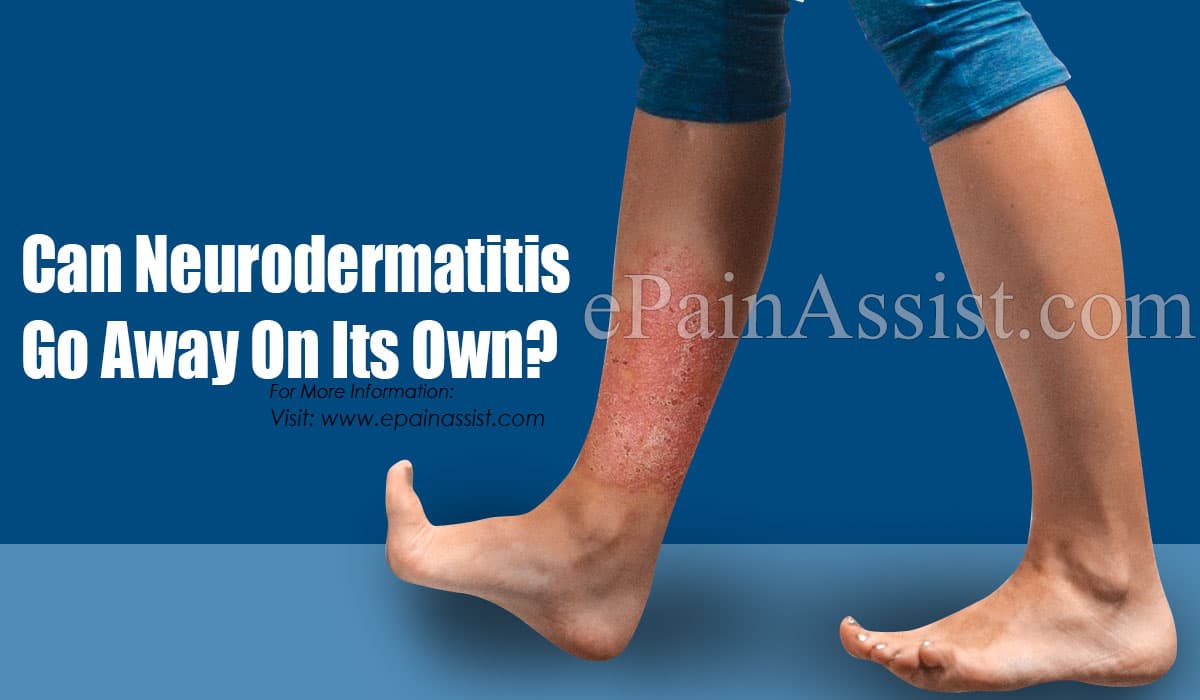Neurodermatitis belongs to the type of eczema. Other types of eczema are atopic dermatitis, contact dermatitis, stasis dermatitis, nummular eczema, etc. Neurodermatitis is a condition that is quite similar to atopic dermatitis. The symptoms of this condition are severe itching at certain parts of the body. There is the formation of patches over the body that itches a lot. Gradually, these patches become scaly and thickened. On scratching these patches, bleeding might be seen and they may also get infected. The exact cause of this skin ailment is yet to be known. The trigger factors for flaring up of these patches can be known with the help of certain tests. (1)

Can Neurodermatitis Go Away On Its Own?
No, neurodermatitis cannot go away on its own, treatment has to be undertaken and even then, it might come back when the patient gets exposed to the trigger factor. With the help of certain natural remedies, you can manage the progress of neurodermatitis. Some of the methods are described below:
Application Of Cold And Wet Compresses Over The Patches: When you apply cold and wet compresses over the patchy skin, it helps you by soothing the skin and eventually relieves itching too. You must put a cold and wet compress over the patchy area of skin and keep the compress for a few minutes and then you may apply the prescribed topical cream. This will help in the proper absorption of the cream into your skin.
Control Scratching And Rubbing Over The Patches: You may have an intense urge to scratch and itch the affected area of skin but you must control that urge and try not to scratch that area. This will help you a great deal in reducing the inflammation. The inflammation gets worse after scratching and itching because then the nerve endings that are present over skin get irritated.
Take Help Of Over-The-Counter Local Applicants: There are many over-the-counter local applicants or creams that contain corticosteroids or anti-histaminic substances. These are very helpful in reducing inflammation. The itching also reduces greatly by using these creams.
Trim Your Nails Properly And Regularly: When you keep your nails short by trimming regularly, there will be less damage to the affected skin when you itch it as it will cause less damage. Even when you are scratching the skin while asleep, doing this will lead to a lot less damage.
Try Covering The Affected Area: You can use either dressing or bandages that will keep the skin covered and protect it from scratching. Cover the area before sleep so that you don’t cause damage to the skin while asleep and scratching unconsciously. (2)

How Do I Know If I Have It?
In neurodermatitis, there is excessive scratching and this leads to uncontrollable itching. Once the itching begins, it follows a certain course or certain steps that are described below:
- The itching may begin when something irritates or rubs or scratches over any part of the skin, for example, certain clothing.
- Eventually, the patient starts to scratch or rub the area that is being irritated. There is a constant urge to scratch the skin even while the patient is asleep. This constant scratching leads to the thickening of the skin.
- There is even more itching over this thickened area of skin and this causes more and more scratching by the patient. The skin that has been thickened starts to thicken even more due to persistent scratching by the patient.
- Due to more and more thickening, the skin now becomes leather-like and the particular part of the skin that has been affected now appears brownish in color.
The specific symptoms of this skin ailment are as follows:
Itching: This is the main feature. Itching is chronic (long-term) and very intense. The intensity of the urge to itch keeps on increasing as the stress level of the patient increases.
- The patient complains of thickening of the skin and when examined, it looks leathery.
- There are visible areas of skin that are affected and appear raw.
- There is the presence of scaling of the affected skin
The skin lesion appears like a patch or maybe like a plaque and it has sharp borders. The texture of the lesion is leather-like. The lesion may itches on the wrist, ankle, rectum, forearms, thighs, inner elbow, anal area, back of the neck, etc. (3)
Conclusion
No, neurodermatitis does not go away on its own. Medications and proper measures have to be taken to control skin inflammation. Some of the home remedies and lifestyle changes have to be done. For example, nails must be trimmed regularly, cold and wet compresses can be applied over the skin lesion, topical corticosteroids can be used, and controlling the scratching would help a lot.
Also Read:
- What Causes Neurodermatitis?
- How Long Will It Take To Recover From Neurodermatitis & How Long Does The Symptoms Last?
- What Are The First Symptoms Of Neurodermatitis & How Do You Test For It?
- What Are The Ways To Prevent Neurodermatitis & Does It Recur?
- What Is The Prognosis Of Neurodermatitis?
- What To Eat And Avoid When You Have Neurodermatitis?
- Coping Methods For Neurodermatitis
